
by Shashikanth Heerekar | May 10, 2025 | SEO News, Technology
Acknowledging the key ranking factors that search engines use to index content and how to improve your site’s online performance.
Introduction
Search engine ranking factor helps Google or other search engines determine which websites should be listed top when someone searches for something. The internet has a lot of information, and search engines work hard to find the most helpful answers quickly.
To do this, they look at every page and check for signs that it is good, like easy-to-read content, fast loading speed, working well on phones, and links from other trusted websites. These signs are called ranking factors.

This comprehensive guide delves into the essential ranking factors shaping SEO in 2025, providing actionable insights to optimize your online presence effectively. To better understand this, imagine you’re asking a librarian to help you find the best book about “plant care for beginners.”
The librarian doesn’t randomly pick a book. They look for one that’s well-written, easy to understand, frequently borrowed, and recommended by other gardening experts.
Similarly, when you type the same question into Google, it checks thousands of websites. It picks those that have fresh, detailed, and reliable content, load quickly, look good on mobile, and are linked to by other trusted gardening websites.
If your website is like a helpful, neatly organized, and frequently recommended book in a library, search engines will likely show it to users first. That’s why improving your content, making your website user-friendly, and building a trustworthy online reputation are all important steps in climbing the search rankings.
1. Quality of Content and Applicability
The quality and applicability of content are very important. It is the key factor for any search engine and is considered the first foundation. Google( search engines ) emphasizes the quality of content that delivers value to users and addresses their queries comprehensively and accurately.
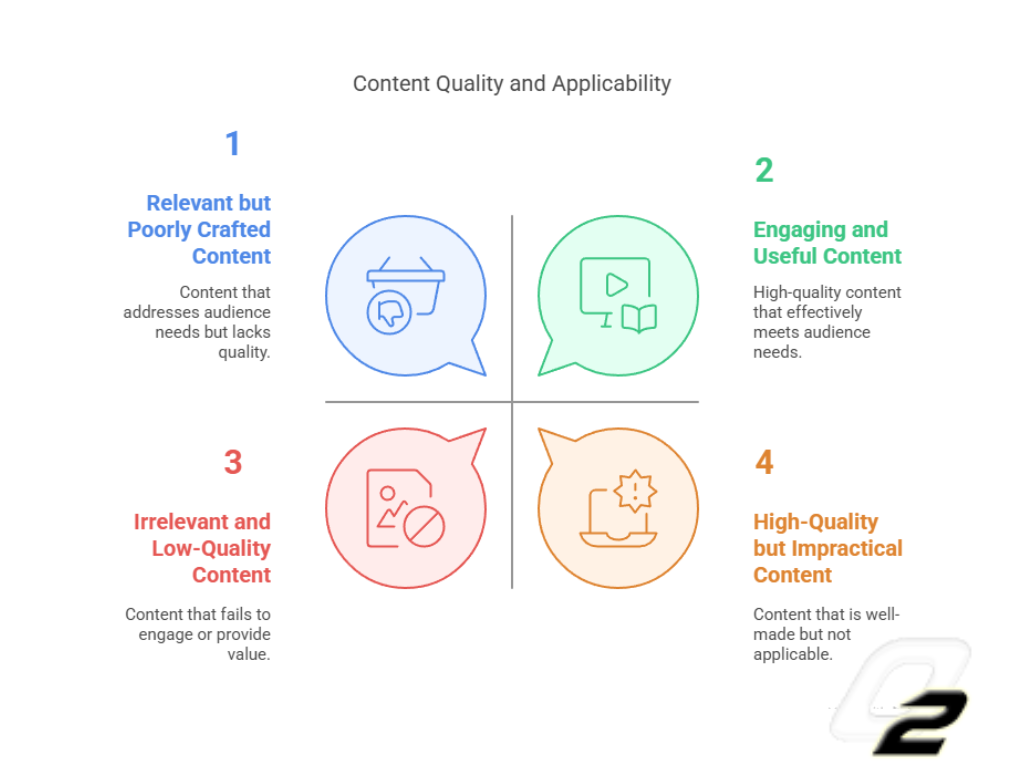
Best methods :
- Complete coverage: Ensure your content fully covers the concept, providing potential questions for users.
- Originality: Create unique content that offers fresh perspectives or information not readily available elsewhere.
- User Engagement: Incorporate engaging elements like images, videos, and interactive features to enhance user experience.
Example: A detailed guide on “Sustainable Living Practices” that includes practical tips, case studies, and expert interviews will likely rank higher than a generic overview lacking depth.
2. E-E-A-T: Experience, Expertise,
Authoritativeness, and Trustworthiness
Let’s break this topic down in a very easy way.
Imagine Google is like a really smart librarian trying to determine if a book is reliable or worth reading for related information.
When it comes to topics related to your health or your money (things they call “Your Money or Your Life” or YMYL), Google makes extra sure the information is top-notch.
That’s where E-E-A-T comes in. It’s like a checklist Google uses to see if the “book” (or website content) is trustworthy:
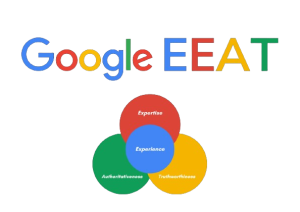
- Experience: The person who wrote this blog does actually know what they’re talking about or what they exactly wanted to deliver? Think of someone who is giving cooking advice, does he actually ever cook?
- Expertise: Does the person have special skills or knowledge in this area? Like a doctor talking about medicine or a mechanic explaining car repairs or SEO expert.
- Authoritativeness: Is this person or website considered a go-to source for this topic by other experts? Are they well-known and respected in their field?
- Trustworthiness: Does the website and the person who wrote it seem honest and reliable? Do they have clear contact information? Do they tell you how they handle your data (privacy policy)?
So, when Google looks at a website, especially about health or money, it pays close attention to these four things.
The sentence then gives an example:
“A financial advice blog authored by certified financial planners, citing authoritative sources like government publications, will establish higher trustworthiness.”
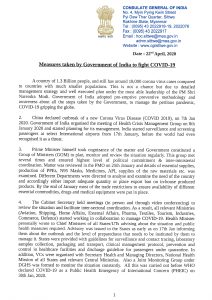
Think of it this way:
- Certified financial planners show expertise (they have the qualifications).
- Citing authoritative sources like government publications shows they’ve done their homework and are backing up their advice with reliable information, which builds trustworthiness and authoritativeness.
Because of these things, Google is more likely to see this blog as a reliable source of financial advice compared to a blog written by someone with no financial background and no sources.
E-E-A-T helps Google ensure you’re getting advice on important topics from people who know their stuff and can be trusted.
3. Mobile-First Indexing
Imagine you’re a movie director. Now you have two versions of the set: a grand, elaborate stage designed for a wide movie screen, and a smaller, more streamlined set built for a smartphone screen.
Nowadays, most of your audience is watching the movie on their phones, so you decide to emphasize the first smartphone set. You’ll make sure that the set looks fantastic, is easy to navigate, and has all the important elements visible on the smaller screen.
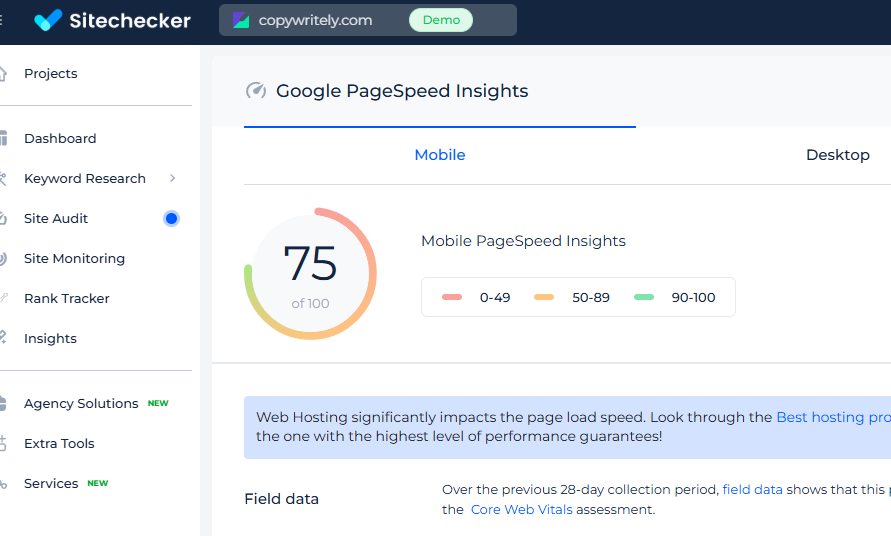
Even if your big stage set is amazing, if the smartphone set is disorganized or missing key features, your audience watching on their phones will have a poor experience or may not be interested in staying due to technical issues. And since most people are watching on phones, that matters most.
Optimization Tips in this new analogy:
- Responsive Design: Try to maintain a layout, size, and design that fits the big and small screens without losing key details.
- Speed Loading: If it takes too long for the scene to appear on their phone, they might get impatient and stop watching. Optimizing images and page which loads quickly on mobile can be click.

Let’s have an easy example:
Imagine you have an online clothing store. You have designed your website in such a way that user unable to open it or it is too much time to open and the images which you have added is not very clear or small in size, the click through button are also palced awkwardly, then the user quickly switch to another clothing store.
The above is an example of the same.
4. Page Experience and Core Web Vitals
Let’s assume you’re visiting a brand new amusement park. Your overall experience is how much you enjoy your entire visit, from the moment you enter until you leave.
In the same way when you entre a new page, google or some other search engine wants to know if people have a smooth and enjoyable time on your website.
Now, within this amusement park, there are a few key rides that Google pays extra attention to, calling them Core Web Vitals. These rides are like the most important parts of your website’s experience:
- Largest Contentful Paint (LCP):
- First Input Delay (FID):
- Cumulative Layout Shift (CLS): The “No Sudden Surprises Ride.”
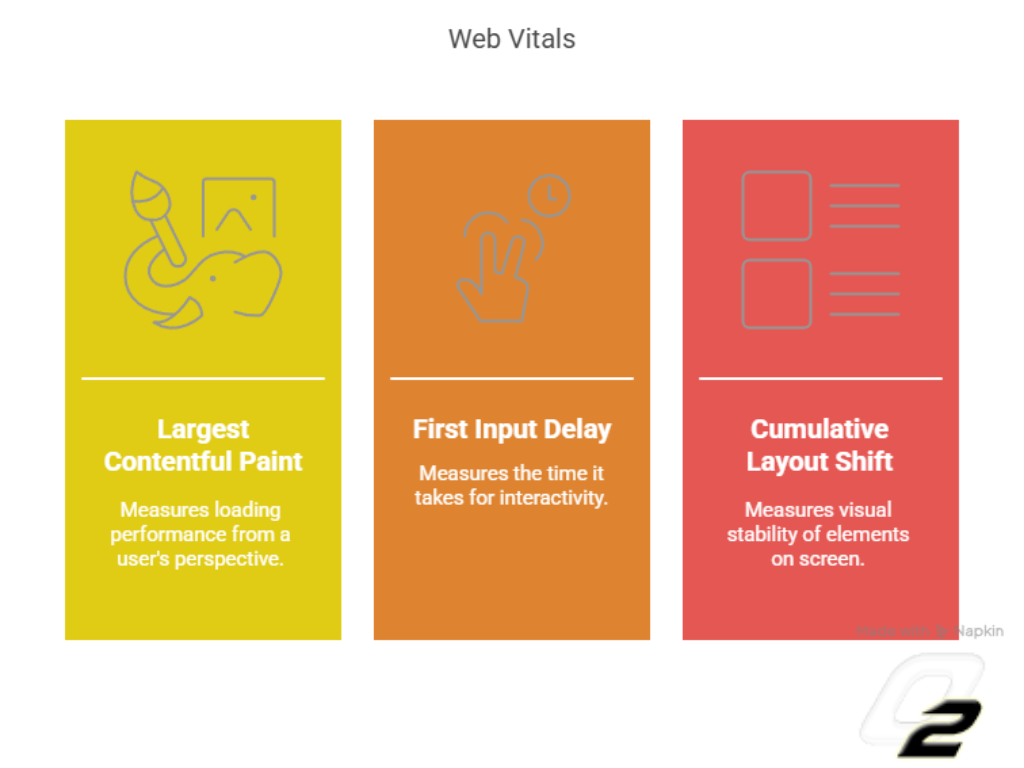
So, Google looks at these three “rides” (Core Web Vitals)—how fast people can get in, how easy it is to play, and whether they feel stable while doing it—to get a good idea of your overall “amusement park” experience (Page Experience). If these rides are smooth and enjoyable, people will likely have a good time on your website.
5. Backlinks and Link Building
Okay, let’s talk about “Backlinks and Link Building” and why they’re a big deal for how high your website appears in Google search results. Think of it like this:
Imagine different websites are like people, and a backlink is like one person recommending another person.
If a really well-known and respected person (a high-authority website) recommends your website to others by linking to it, it’s like a strong vote of confidence. Google sees these recommendations as important signals that your website has valuable and trustworthy information.

Note: In the above image Brainvire is proveding backlink to oxygen company.
Here’s a simple breakdown:
- Backlink: When another website puts a link on their page that takes you to your website. They say, “Hey, this website has something interesting you should check out!”
- Link Building: The process of getting other websites to link back to yours. It’s like trying to get those respected people to recommend you.
Why are backlinks so important for Search Engine Ranking?
Think of it as Google trying to figure out which websites are the most popular and trustworthy sources of information on a particular topic. If many other credible websites are linking to yours, it’s like many people are saying, “This website knows what it’s talking about!”‘
This tells Google that your website is likely a good resource and deserves to rank higher in the search results.
NOTE: Getting backlinks from high-quality and relevant websites is like getting strong recommendations. Strong recommandation will have good impact on search engines.
6. Technical SEO and Site Architecture
A well-structured website facilitates better crawling and indexing by search engines.Let’s explain technical SEO and site architecture using a completely different image.
Imagine Google is like a delivery company trying to pick up and deliver packages (your web pages) to people all over the world.
Simple Example:
Think of a big news website. They publish many articles every day. If their website has a clear URL structure (like www.xyznews.com/sports/football/todays-match) and an updated sitemap that tells Google about each new article, it’s much easier for Google to find and index all their stories quickly so people can see them in search results.

In short, Technical SEO and site Architecture are very important for any website to provide users a proper guide to visit which category or the user is looking for, which subject he is interested in.

7. On-Page SEO Optimisation
Optimizing individual pages enhances their visibility in search results. On-page seo includes title tags, meta description, keywords and Header tags like (H1, H2, H3, and H4).

Think of a webpage like a helpful sign:
- Clear Heading: Tells you exactly what’s there.
- Short Description: Makes you want to read more.
- Organized Subheadings: Help you find what you need quickly.
8. User Engagement Signals
User behaviour metrics influence search rankings. CTR, Bounce rate and Dwell time this are some of the examples that i have tried, and the results are just great.
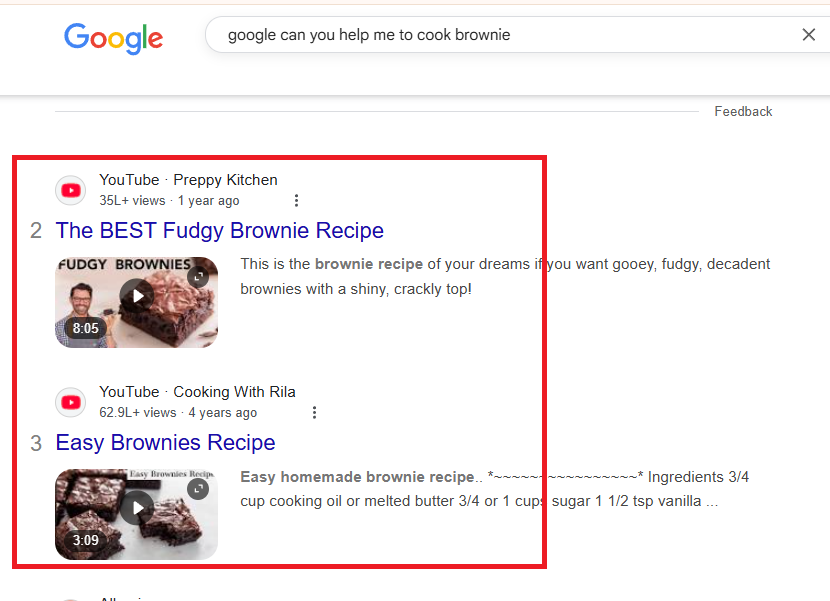
You can also use tutorial videos and images, which also help in the branding of your website.
9. Voice Search Optimization
Voice search optimization is now a days trending, most of the website have enable this feature in their website like voice search optimization and voice assistants.
Voice search offers hands-free convenience, especially while driving or cooking. It provides quick answers and streamlines information retrieval, making multitasking easier.
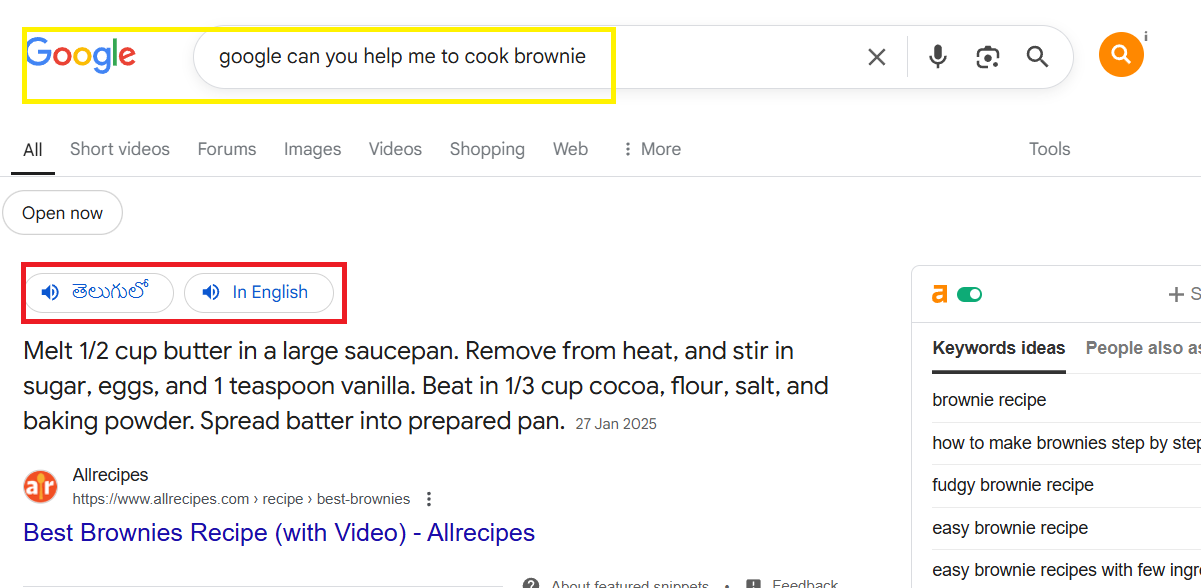
Many updated Divi theme provide this features, you can enable them.
Setting up voice search on your site is usually quick and requires just a few simple adjustments, and then it’s ready for voice commands!
Conclusion
A multidimensional strategy is needed to stay ahead of the curve in SEO, emphasizing user involvement, technological optimization, content quality, and flexibility in response to new trends.
You may improve your website’s visibility and attain long-term success in search engine rankings by placing the methods described in this tutorial into practice.
FAQ
FAQ 1: What is the most important ranking factor in SEO?
Content quality remains the most critical ranking factor. Search engine like (Google) sort fully infromative article, explained detailed, and provides relevant content that answers users’ queries.
FAQ 2: Should often we need to update my website content?
Updating website content in every 3 months is very important as it helps the users to update with latest or updated information. It also helps search engine to climb blog on top the searches and also improving your ranking in search. I personally recommand that updating the content is very important to stay top on search engines.
FAQ 3: Does optimizing for mobile affect search engine rankings?
It’s true that mobile optimization is essential. The mobile version of your website directly impacts rankings due to Google’s mobile-first indexing. Fast loading times, responsive designs, and easy-to-use navigation improve SEO performance and the mobile user experience.
FAQ 4: How do backlinks help in SEO?
Backlinks function like other websites’ endorsements. Search engines are alerted to the legitimacy of your material when reputable websites link to it. Quality backlinks improve your domain authority and can significantly enhance your visibility in search results.
FAQ 5: What is Google RankBrain, and why does it matter?
Google RankBrain is an AI system that helps process search queries. It evaluates how users interact with results, focusing on relevance and satisfaction. Optimizing for user intent and engagement ensures better alignment with RankBrain’s ranking logic.
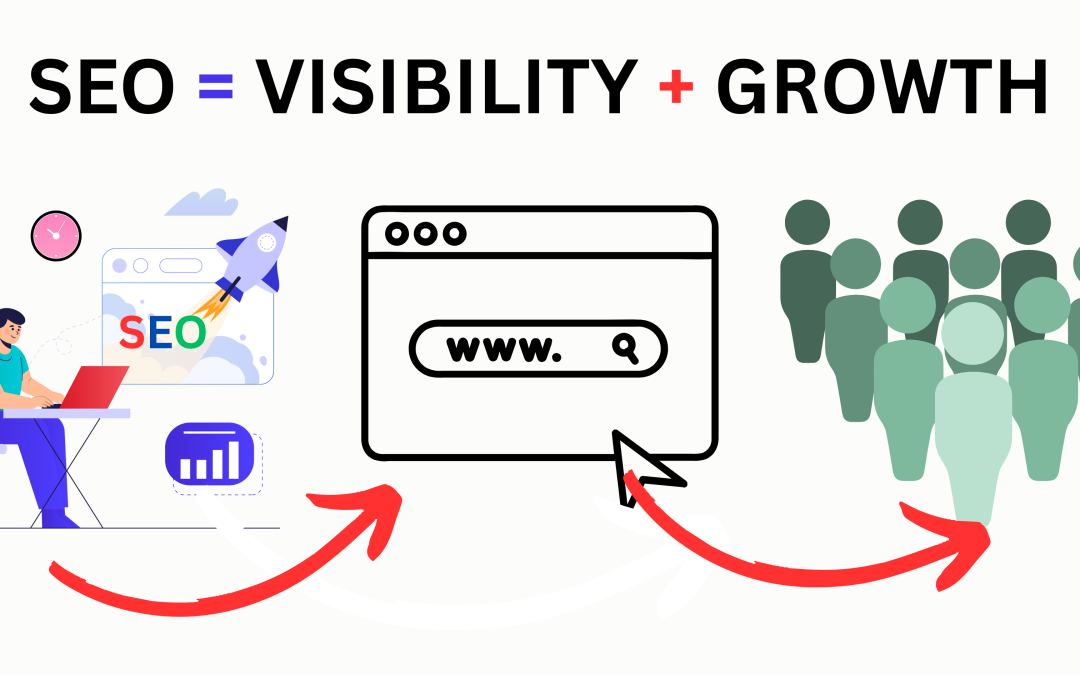
by Shashikanth Heerekar | May 6, 2025 | All Things about Marketing, SEO News, Technology
What Is SEO? Discover how SEO helps websites rank on Google. Here are easy tips for beginners to understand and apply SEO fast! Start learning now!
What is SEO (Search Engine Optimization)?
Search Engine Optimization, or SEO, is a method of improving a website’s visibility in search engine results pages (SERPs). It involves techniques and creative strategies to improve rankings, attract organic traffic, and increase the quality and quantity of visitors.
In other words, SEO is also about increasing the standard and total website traffic. As you improve your position in search engines, you’ll likely get more visitors who may be engaged in your website, its products, or its content.
For the best explanation, we can use a real example. For instance, if you search for the term ‘best AC service providers’ on Google, Google will show you the top-ranking website for your keyword. Google shows these results for free, and the number of visitors coming through this is called organic traffic.
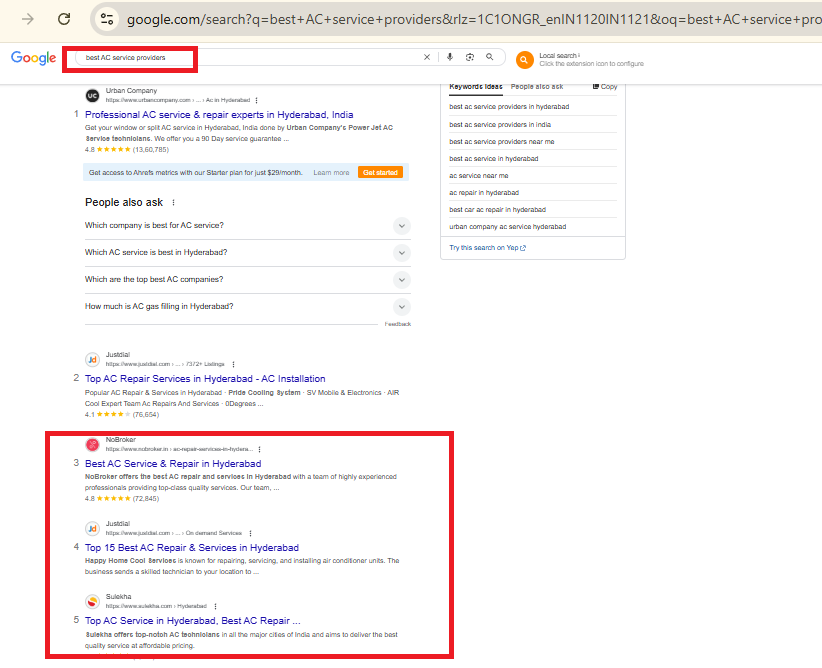
Why is SEO Important?
Catering to a Huge Audience
Most online approaches begin with a search engine. Ranking high means visibility in front of a wide, global audience actively searching for your products or services.
Low Cost of Implementation
Compared to paid advertising, SEO is cost-effective in the long run. You pay with time and effort upfront, but you can enjoy consistent traffic once you rank.
Staying Ahead of the Competition
Your competitors are investing in SEO. If you don’t, you’re handing them an advantage. SEO helps you stay relevant and ahead in a competitive online landscape.
Enhance User Experience
Good SEO practices improve user experience. You can please Google and your visitors by offering fast load speeds, mobile optimization, and easy navigation.
Builds Trust and Credibility
Sites that rank well are considered more trustworthy by users. Authority backlinks, quality content, and user-friendly design contribute to your reputation.
Data and Analysis
SEO provides valuable insight into user behaviour through tools like Google Analytics, Search Console, and Heatmaps.
How Does a Search Engine Work?
Search engine tools like Ecosia, Bing, StartPage, Google and DuckDuckGo are important systems that help users find accurate information quickly with accuracy. They follow a multi-step process that includes crawling, indexing, and ranking. Let’s break it down:
Crawling
Crawling is the first step in the process. Search engines send out automated bots known as crawlers or spiders to discover content across the web. These bots move from one page to another via links, collecting information such as:
- Page titles
- Meta tags
- Image alt texts
- Content structure
- Internal and external links
Search engines start with a known list of URLs (called a seed list) and, crawl those pages, then follow hyperlinks on those pages to discover new content. Crawling helps search engines discover which websites exist and what they contain.
✅ Example: Googlebot is Google’s main crawler. It continuously explores the internet, discovering new content and re-crawling updated pages. In the below as you can see, google has crawled and index your post.
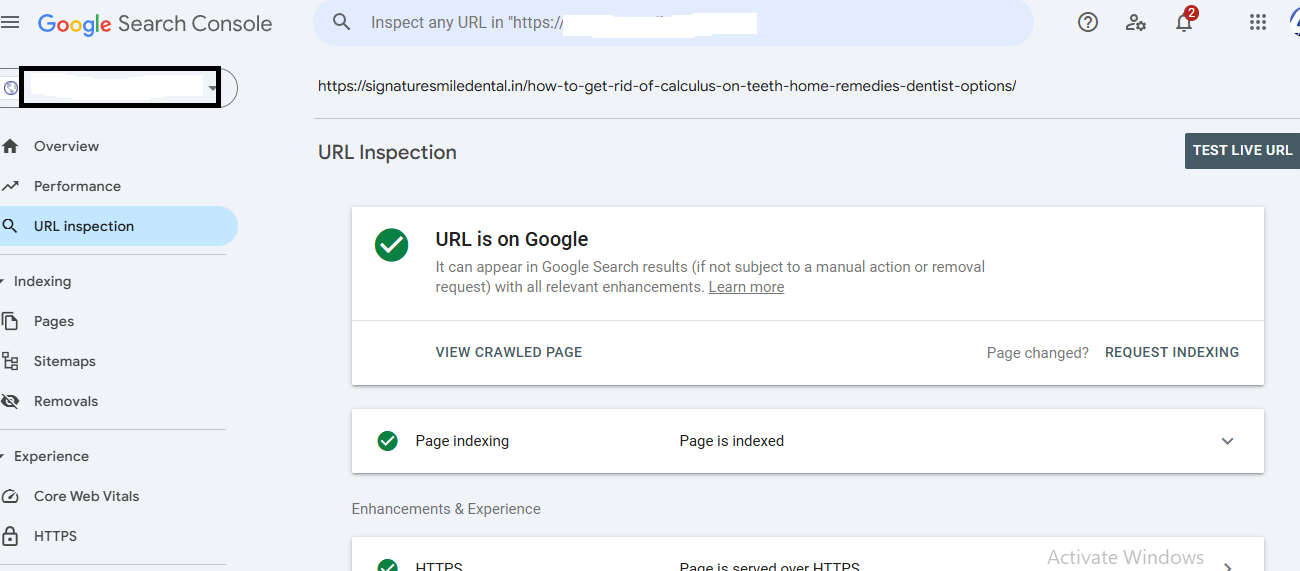
Indexing
Once the content is crawled, it needs to be understood and stored. This process is called indexing. The data collected by crawlers is organized and added to the search engine’s massive index — essentially a digital library of all known web pages.
During indexing, search engines analyze:
- Page content and topic
- Keywords and keyword context
- The freshness of the content
- Multimedia content like images or videos
- Page structure (HTML, headings, schema, etc.)
Search engines also use semantic indexing, which helps them understand the exact keyword and its context and intent.
⚠️ Note: If your page is not indexed, it won’t appear in search results — even if it’s well-designed or keyword-optimized. In the below image page is not index.
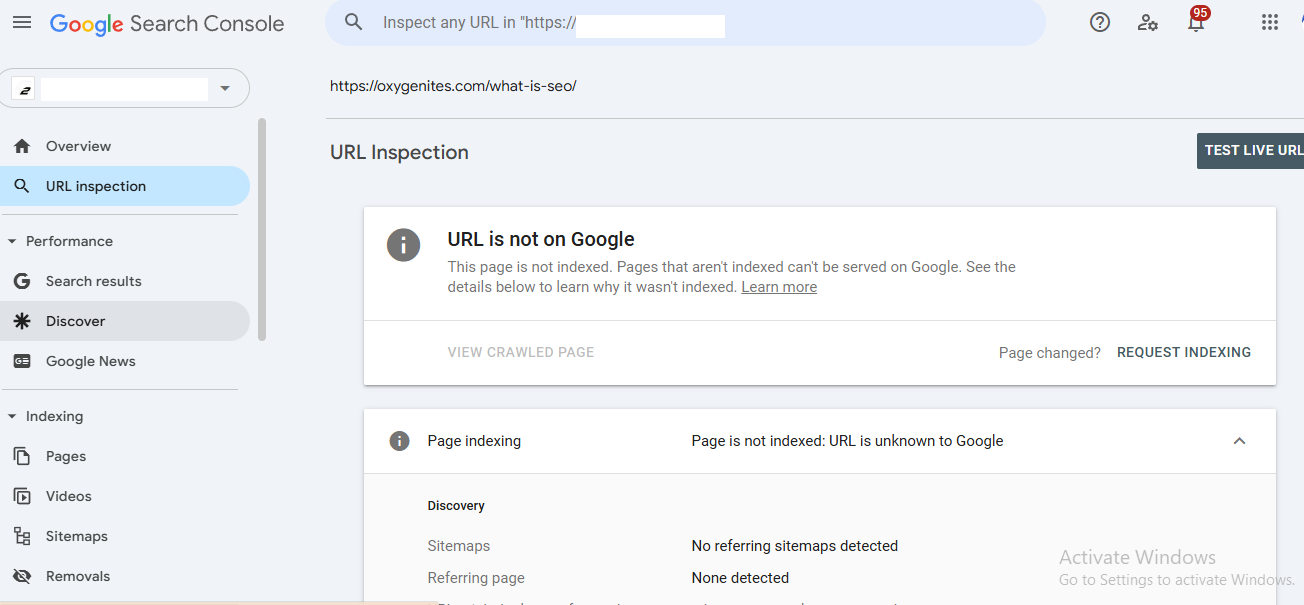
Ranking
When a user search a query into a search engine, it searches its index to find the most relevant pages. This is where the ranking algorithm comes into play.
The algorithm uses hundreds of ranking signals (Google has over 200) to evaluate and sort results. Tops of the most important ranking factors include:
- Keyword relevance
- Page authority (backlinks)
- Mobile-friendliness
- Page load speed
- Secure connection (HTTPS)
- User engagement signals (click-through rates, dwell time)
- Content quality and originality
Search engines try to match the user intent (informational, navigational, or transactional) with the most helpful and trustworthy pages. The goal is to show the best possible answer at the top of the search results.
How Do Search Engines Find Your Pages?
This tool helps you send a request to Google to crawl your website. You can also submit sitemaps for your site and monitor the number of submitted pages added to Google’s index and other details.

Why Sites Don’t Show Up in Search Results?
- Noindex tag present
- Poor content quality
- Blocked by robots.txt
- Lack of backlinks
- Penalty from algorithm updates
What is the Search Engine Algorithm?
Search engines use algorithms to decide the most relevant results for a query.
i. Analyze User Query
Search engines try to explain the intent behind a search query (informational, transactional, or navigational).
ii. Finding Matching Pages
The engine matches the query with indexed pages based on keywords, relevance, and authority.
Why Search Engines Sometimes Display Faulty/No Results?
This happens when the content doesn’t match user intent, is poorly optimized, or lacks authority.
How SEO Works?
SEO works by optimizing various website elements so search engines can explain their relevance and value to user queries. It starts with identifying what people are searching for—using keyword research—and then tailoring your website’s content, structure, and technical setup to target those search terms. By doing this, search engines are more likely to rank your pages higher, bringing in more organic traffic.
For example, run a bakery in Delhi and optimize your site with keywords like “best cakes in Delhi.“ Add quality content about your products, fast loading speed and mobile-friendliness. Google will find your site more valuable for people searching those terms. Over time, you may appear on the first page, attracting customers without paying for ads.
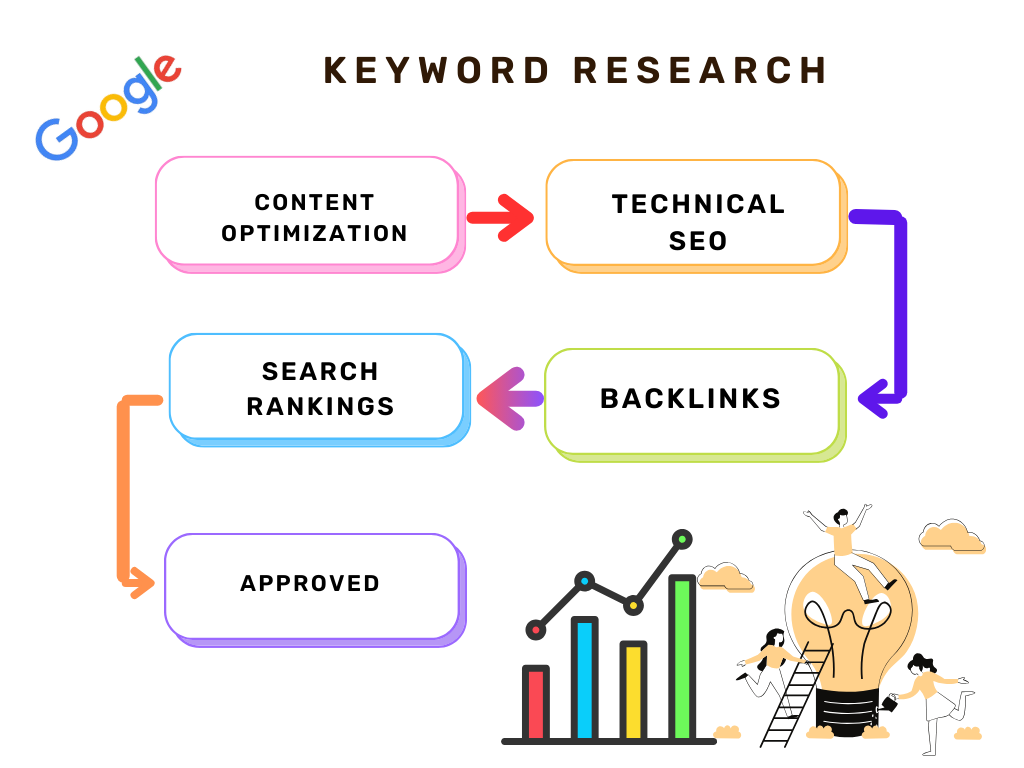
What are the Major Types of SEO?
On-Page SEO
Why is On-Page SEO Important?
It verifies that search engines recognize the content of your pages and rank them appropriately.
What are the Most Important On-Page Ranking Factors?
i) Title Tag Optimization
Use clear, concise titles with the primary keyword near the beginning.
ii) Meta Keywords and Meta Descriptions
Though meta keywords are outdated, a well-written meta description can increase CTR.
iii) Heading Tags
Organize content using H1, H2, H3 and H4 tags appropriately.
iv) Image Optimization and Interactive Media
Use alt text and descriptive file names, and reduce image size.
v) Engaging Content
Content should be unique, relevant, and answer the searcher’s query.
vi) Internal & External Links
Use links to guide users and spread link equity.
vii) Handle Duplicate Content
Use canonical tags and avoid duplicate pages to ensure search engines rank the correct version.
2. Technical SEO
Why is Technical SEO Important?
It provides that search engines can crawl, index, and rank your site effectively.
Technical SEO Best Practices
i) Website Speed
Improve loading times using caching, compression, and fast servers.
ii) Mobile-Friendliness
Responsive design is now a ranking factor. Use Google’s Mobile-Friendly Test.
iii) Site Architecture
Structure your site with a clear hierarchy and use breadcrumb navigation.
iv) Security
Use HTTPS to encrypt data and increase trust.
v) Structured Data Markup
Use schema to enhance search appearance with rich snippets.
vi) Create an XML Sitemap
The below given is an example of XML Site map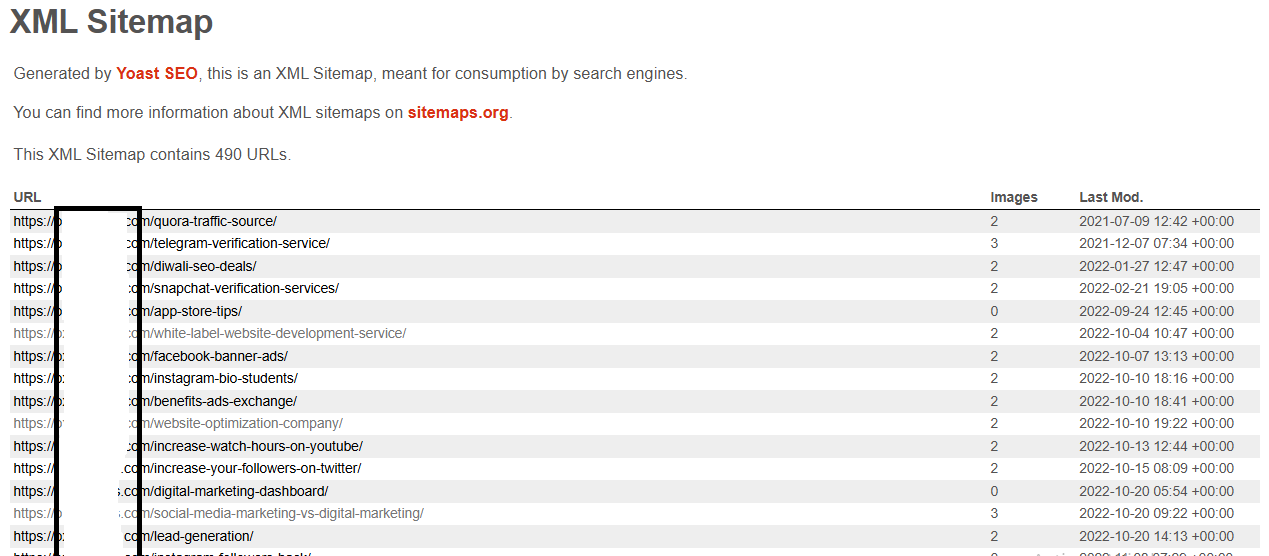 3. Off-Page SEO
3. Off-Page SEO
Why is Off-Page SEO Important?
It builds your site’s authority and trustworthiness.
Off-page Optimization Techniques
i) Quality Inbound Links
Get backlinks from sites with high domain authority(DA).
ii) Social Media Marketing
Share your content or blogs on social media platforms to increase visibility and backlinks.
iii) Content Marketing
Produce high-value blog posts, infographics, and videos.
iv) Localization and Citations
Ensure consistent business information across directories.
v) Email Marketing
Engage audiences and drive traffic to your optimized content.

How do you do keyword research for SEO?
1. What is the role of Keyword research in SEO, and why does it play an important role?
Keyword research is one of the most important aspects of SEO because it directly impacts how well your content ranks on search engines. Acknowledging what your audience is searching for helps you create relevant and optimized content for those specific queries. By knowing the search intent that regular visitors are looking for, you can tailor your website’stciles, blogposts, and services pages to target those particular keywords.
It increases your organic traffic and ensures that the content you produce meets the needs and interests of your audience. For instance, if you’re running an online store that sells sneakers, performing keyword research can reveal terms like “best running shoes for flat feet“ or “affordable sneakers for men,“ which you can target in your content to increase visibility in search results and attract more customers.
The below is the example for top searches.
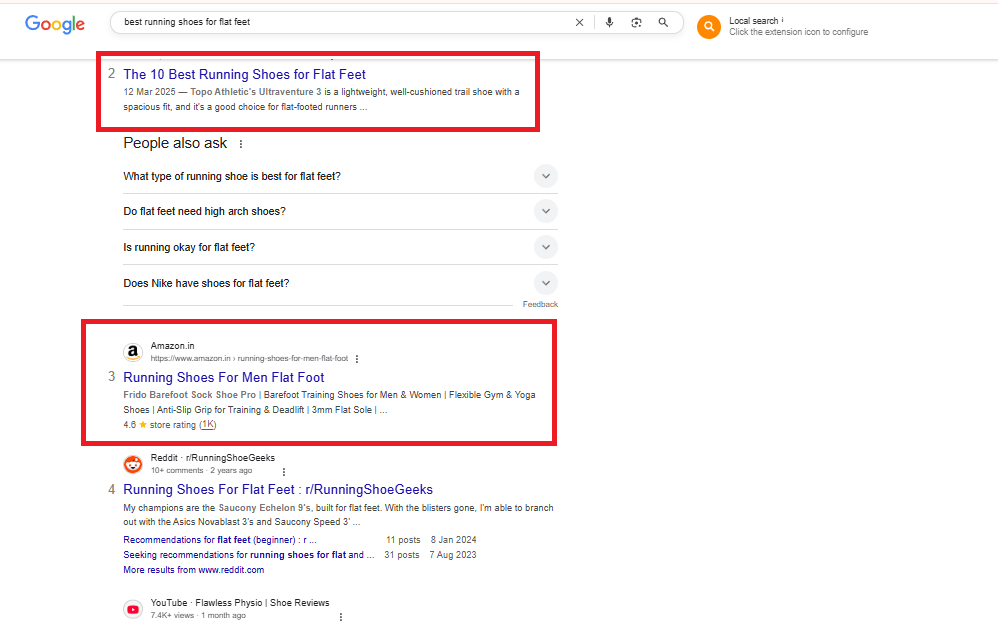
2. Brainstorming for Keywords
Brainstorming for keywords is the initial step in the keyword research process, and it involves thinking about your business, niche, and the potential questions your audience might have. Start by creating a list of broad topics related to your industry, products, or services. These could be things like “digital marketing,” “healthy eating,“ or “home improvement tips.“ Once you have a list of broad topics, you can break them down into more specific subtopics or long-tail keywords.
For example, from “digital marketing,“ you could narrow down to “SEO services,” “email marketing tips,“ or “social media strategies.“ This helps identify general and specific search intents that people might use when looking for solutions in your area of expertise.
3. What are some things to know before finding a suitable keyword? (Competitor’s Keywords Analysis)
It is important to find the most suitable keyword. It involves not only brainstorming but also analyzing your competition. By gathering your competitors’ keywords for which they are ranking, you can gain valuable insights into what works and which topics have significant search volume. Tools like Ahrefs, Semrush, and Moz allow you to analyze your competitors’ keyword strategies. You can enter their websites using these tools to see which keywords they rank for, how much traffic they’re receiving, and the difficulty level of ranking for these terms.
For example, if you find that your competitor’s blog is ranking for the keyword “best-running shoes for long-distance runners,” this could indicate high interest in this topic. You can use this information to target the same or similar keywords in your content, adjusting your approach to make it more compelling or detailed to improve your chances of outranking them.
Competitor analysis gives you a competitive edge and can highlight keyword opportunities that you might not have considered otherwise.
The below image shows you the competitor’s keywords which we can include in your article.

4. How to Choose the Best Keyword?
i) Long-tail Keywords:
Less competition and more targeted traffic.
ii) Latent-Semantic Indexing (LSI) Keywords:
Related terms that support the main keyword.
iii) Follow Recent Trends:
Stay updated using Google Trends.
iv) Location-Based Keywords:
Useful for local SEO (e.g., “plumber in Miami”).
5. Keyword Research Tools
i) Google Trends
ii) Google Keyword Planner
iii) Semrush
iv) Soovle
v) Ubersuggest
Emerging Trends in SEO in 2025
1. Artificial Intelligence in SEO
AI is transforming keyword research, content creation, and competitor analysis.
2. Google’s EEAT Factors
Experience, Expertise, Authoritativeness, and Trustworthiness matter more than ever.
3. Core Web Vitals for Enhanced Ranking
Focus on LCP, FID, and CLS for performance.
Quick Tips to Improve Core Web Vitals
- Use fast hosting
- Compress media
- Defer JavaScript
Practical Guide to Improving Your Website’s SEO in 2025
1. Using AI for SEO
i) AI-Powered Keyword Research
Use AI tools to uncover opportunities faster.
ii) Understanding Search Intent with AI
Analyze what users want to see.
iii) On-page Optimization with AI
Optimize content layout and structure using smart suggestions.
iv) Competitive Analysis
Track competitors’ moves in real-time.
v) Facilitating Content Creation
Generate outlines and FAQs and draft content using AI.
2. Doing SEO Yourself
- Use Google Search Console
- Follow on-page and technical SEO best result
- Build relationships for backlinks
Conclusion
SEO in 2025 requires a mixture of solid fundamentals, awareness of emerging trends, and smart implementation. You can secure your place in Google’s top ranking by aiming at valuable content, user experience, and your site’s technical health.
FAQs
Q1: How long does SEO take to show results?
A: Typically, it is 3–6 months, depending on competition and effort.
Q2: Is SEO better than PPC?
A: SEO brings long-term results, while PPC is immediate. Both have their place.
Q3: Can I do SEO without coding?
A: Yes, many SEO tasks can be completed without coding skills.
Q4: How often should I update SEO content?
A: Update every 3–6 months or when major algorithm updates occur.
Q5: What’s the best free SEO tool?
A: Google Search Console and Google Keyword Planner are excellent free tools.
Q6: What are the latest Google SEO trends in 2025?
A: In 2025, Google emphasizes EEAT (Experience, Expertise, Authoritativeness, Trustworthiness), Core Web Vitals, mobile optimization, and AI-generated helpful content. Following ethical white hat practices and optimizing user experience is crucial to maintaining or improving rankings in search results.























